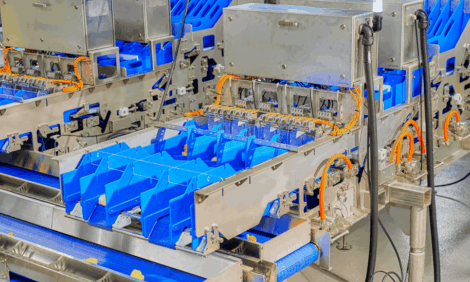



International Summit Highlights the Value Chain of Phytate Destruction and the Role it Plays in Precision Nutrition
GLOBAL - The opening of the 3rd International Phytate Summit (IPS3) yesterday in Florida, USA, saw nutrition experts from around the world discuss the latest research on phytate and its multi-factorial impact on animal production.With phytate now estimated to cost as much as $2 billion per year in lost performance, strategies to limit its anti-nutritive effect in feed are a high priority. Today, delegates from 22 countries gathered to hear academics and industry leaders present research into the value chain of phytate destruction – how combatting phytate can improve feed efficiency, sustainability and ultimately profitability.
Hosted by the University of Arkansas, the University of Illinois and animal nutrition technology company AB Vista, the three-day summit brings together leading figures from science and industry, to collaborate on the current understanding of phytate and identify practical strategies to control and destroy its presence in feed.
The first day, chaired by Dr Carrie Walk, Senior Research Manager at AB Vista, highlighted the importance of further understanding the ‘breakdown’ products of phytate, particularly phytate esters and inositol, and their impact on the animal.
The session began with an update on phytate degradation patterns in the gastrointestinal tract of broilers and pigs, presented by Dr Markus Rodehutscord of the University of Hohenheim. This was followed by a review of the anti-nutritive properties of phytate esters – specifically IP4 and IP3 – on nutrients, by Dr Mike Bedford, Research Director at AB Vista, who explained: “Until recently, the focus has been almost exclusively on IP6 and losses of amino acids and minerals. Results of recent work, however, indicate that the lower esters are not as inert as they were purported to be.”
Dr Damian Jozefiak of the University of Poznan discussed the relevance of the gut microbiome and the animals’ endogenous phosphatases on phytate breakdown and phosphorus utilisation: “Although the gastrointestinal microbiota is a relatively unexplored area, incorporation of novel techniques such as pyrosequencing should clarify our knowledge about the potential role of the microbiota in phytate destruction.”
The intracellular role and functions of myo-inositol as well as inositol diphosphates (IP7 and IP8) were presented by Dr Korinna Huber of the University of Hohenheim and Dr Steve Safrany of RCSI-Medical, University of Bahrain, respectively.
Dr Safrany stated: “Under physiological situations, inositol diphosphates, otherwise known as IP7 and IP8, are created by the phosphorylation of either IP5 or IP6 and since their discovery in 1993, research suggests they play a role in cell repair, energy metabolism, bone deposition, and several other signalling pathways within the cell. This highlights the important role diphosphates may play in regards to cellular metabolism, growth and skeletal integrity.”
Concluding the session, Dr Pete Wilcock, Global Technical Manager at AB Vista, outlined one way in which the complex science is being translated into giving practical benefits for producers: “Understanding both dietary phytate levels and optimum phytase characteristics to breakdown that phytate, is important in getting the most out of phytase use in monogastric feeds. This can be associated with maximising phosphorus release and feed cost savings or the near complete phytate degradation to improve animal performance and improve production efficiencies.”
IPS3 continues on 9th and 10th November, with a discussion on formulating with minerals and amino acids respectively. For more information, visit www.abvista.com contact AB Vista on +44(0)1672 517 650 or [email protected].









